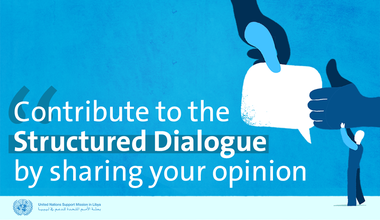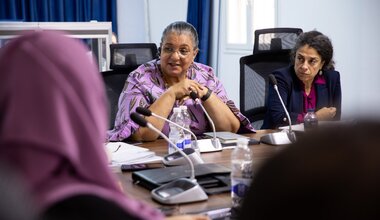Human Rights Report on Civilian Casualties - February 2017
From 1 February to 28 February 2017, the United Nations Support Mission in Libya (UNSMIL) documented 11 civilian casualties, including 3 deaths and 8 injuries, during the conduct of hostilities across Libya. Victims included 1 child killed and 1 injured, 2 men killed and 5 injured and 2 women injured.
Civilian Casualties and Facilities
1 civilian was killed and 2 injured by gun shots, 1 was killed from shelling, while the cause of 1 death and 2 injuries could not be established. Explosive remnants of war caused 3 civilians to be injured and 1 was injured after being beaten.
UNSMIL documented 2 deaths and 3 injured in Tripoli, 4 injured in Benghazi, 1 death in Zuwarah and 1 in al-Zawiya.
The civilian casualties figures include the death of a boy shot in a car that reportedly failed to stop at a check point in Zuwarah, the injury of 2 men and a women from explosive remnants of war in Benghazi in three separate incidents, the injury of a female university student by a stray bullet in al-Zawiya and the beating of nurse by members of an armed group in the Benghazi Medical Centre.
UNSMIL documented 2 deaths and 3 civilians injured, including a child shot in the head by a stray bullet, during fighting between 23 and 25 February in the Abu Salim area of Tripoli. UNSMIL received reports of more civilian casualties from this armed conflict, which occurred in a heavily populated area of Tripoli, however, has not yet been able to verify the reports.
On 23 February, a shell hit an electricity transmission line in al-Nasser neighbourhood during the conflict in the Abu Salim area, causing power cuts in the vicinity.
UNSMIL was unable to determine with certainty which parties caused civilian casualties in February.
Other Casualties
On 1 February, a man was reportedly shot dead after capture, in the context of armed conflict between Warshafana and Janzour.
Around 12 February, a man was shot dead in the street in al-Zawiya.
On 20 February, the bodies of 74 migrant men washed up on the shore in Harsha with a rubber boat that had no engine.
On 23 February, the Libyan Red Crescent and local authorities exhumed at least 15 bodies from unmarked graves in the Qanfuda area. Details regarding the identity of the bodies or circumstances of deaths are not yet known.
On 28 February, 4 adults, including 2 foreigners and 1 former Abuhdeima prisoner died in the Qanfuda area from shelling. UNSMIL was unable to verify whether the men were civilian or not.
Note
The figures for civilian casualties set out above only include persons killed or injured in the course of hostilities and who were not directly participating in the hostilities. The figures do not include those casualties that are not a direct result of hostilities, for example executions after capture, torture or abductions, or casualties caused as an indirect consequence of hostilities. The figures are based on information UNSMIL has gathered and cross-checked from a broad range of sources in Libya, including human rights defenders, civil society, current and former officials, employees of local governments, community leaders and members, witnesses, others directly affected and media reports. In order to assess the credibility of information obtained, where possible, UNSMIL reviewed documentary information, including medical records, forensic reports and photographic evidence.
The figures are only those that UNSMIL was able to document in the reporting period. They are not likely to be complete and may change as new information emerges about incidents involving civilian casualties that took place during this period.
Similarly, while UNSMIL has systematically tried to ensure that the cases it documented are based on credible information, further verification would be required to attain a higher standard of proof. Due to the security situation, UNSMIL has not been able to carry out direct site visits in Libya to obtain information. Disruption in communications especially in areas controlled by groups pledging allegiance to ISIL and fear of reprisals against sources further hamper information gathering.
While not all actions leading to civilian casualties breach international humanitarian law, UNSMIL reminds all parties to the conflict that they are under an obligation to target only military objectives. Direct attacks on civilians as well as indiscriminate attacks – which do not distinguish between civilians and fighters – are prohibited. Attacks that are expected to cause incidental loss of civilian life, injury to civilians and damage to civilian objects excessive to the anticipated concrete and direct military advantage are also prohibited. Such attacks amount to war crimes that can be prosecuted by the International Criminal Court.
In order to ensure greater protection of the civilian population and essential infrastructure, all parties engaged in fighting in Libya must cease the use of mortars and other indirect weapons and imprecise aerial bombardments in civilian-populated areas, and not place fighters or other military objectives in populated areas. All executions of captives must cease and all those captured including fighters must be treated humanely in all circumstances. Murdering or torturing captives is also a war crime, regardless of what the captive may be accused of.
 United Nations Peacekeeping
United Nations Peacekeeping UN
UN









